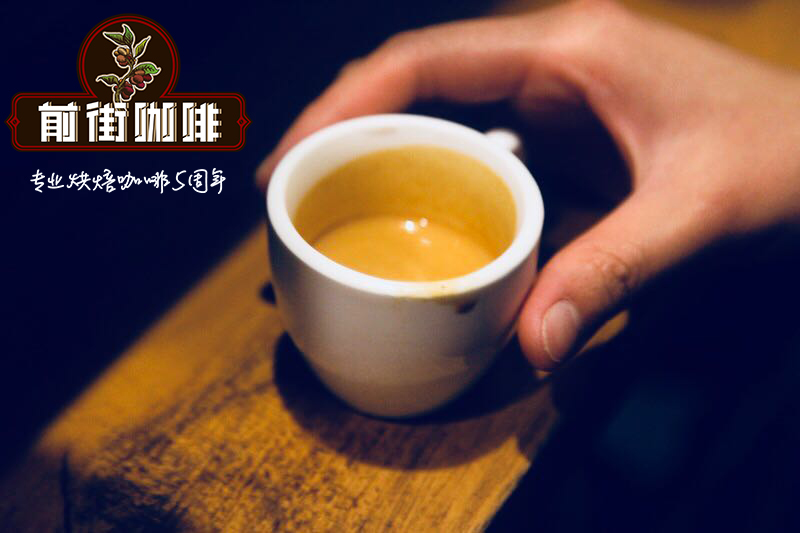What is the difference between washing coffee and tanning coffee? what is the difference in the taste of washed sun-cured coffee beans?

Professional coffee knowledge exchange more coffee bean information please follow the coffee workshop (Wechat official account cafe_style)
Insolation
This is a relatively old way to deal with it. Sun treatment is a kind of low-cost and simple treatment. Sun treatment is to reduce the water content of coffee through a large amount of drying.
First, screen the floating beans.
Pour the harvested coffee fruit into a large trough, and the ripe and full fruit will sink to the bottom of the water; the underdeveloped or overripe fruit will surface, and these floating beans need to be removed. But in some areas where water is scarce, coffee fruits are screened through a sieve.
2. Sun drying
After screening the coffee fruit, spread the whole coffee fruit with meat belt directly on the cement ground or on the sun bed and dry it naturally to about 12% of the water content, which takes about two to four weeks, depending on the climate of the place of origin.
Third, shelling
After the coffee fruit is dried, the hard peel, pulp and sheepskin are removed by a shelling machine, and the coffee raw beans we want are obtained.
Although the cost of sun treatment is relatively low and the treatment process is relatively simple, it also has some shortcomings, because it must be placed in a position that can be exposed to sunlight, and the requirements for climate and environment are more stringent. Generally concentrated in tropical dry and wet climate countries, the weather, environment uncontrollable factors are more, improper treatment, prone to defective beans, insect borer beans, rot, mildew At this time, there are many flavor impurities.
And the water content of the coffee fruit itself is quite high. Leave the coffee fruit in one place for more than 20 days, the fermentation reaction will occur naturally, if the fermentation is excessive, it is easy to rot. If the coffee fruit is too thick and airtight somewhere, the decay will be even more serious. So it takes a lot of manpower to stir the coffee pile frequently to ensure ventilation. In addition, there are very few screening elements in the sun method, only a rough screening after picking, and then all the way to the coffee sack, the defect rate of the sun will be higher than that of washing treatment.
Although the defect rate of sun-treated coffee beans will be higher, but excellent sun-treated coffee beans have a higher sweet taste, mellow taste, aroma will be more complex.
Water washing
If you usually pay attention to the coffee treatment, you will find that many boutique coffee is actually treated by washing. Water washing is a technology invented by the Dutch in the 18th century. It is suitable for rainy areas. Although the process is quite tedious, it is a more common method of raw bean treatment at present.
First, select beans
Put the harvested fruit in a water tank and soak for about 24 hours. At this time, ripe fruit will sink, while immature and overripe fruit will float up and can be removed.
Second, remove the pulp.
Use a machine to remove the peel and pulp, leaving only coffee beans wrapped in endocarp. At this time, there is a layer of mucous membrane on the outside of the beans, and the process of washing is to wash this layer of mucous membrane.
3. Fermentation
The adhesion of the mucous membrane is very strong and is not easy to remove. It must be placed in the tank for about 18-36 hours to ferment and decompose the mucous membrane. There are two methods of fermentation, namely wet fermentation and dry fermentation, as the name implies, the former adds water, the latter does not add water. In the process of fermentation, the seed and internal pulp will produce special changes, which is one of the steps that most affect the flavor of coffee. Some farms add hot water or enzymes to speed up fermentation, which has a negative impact on the quality of coffee beans and is not popular with selected coffee lovers.
4. Washing
Farms that use the washing method must build washing ponds and be able to introduce an endless supply of running water. During the treatment, the fermented beans are put into the pool and passed back and forth, using the friction of the beans and the power of running water to wash the coffee beans until smooth and clean.
5. Drying
After washing, at this time, the coffee beans are still wrapped in the pericarp with a moisture content of 50%. They must be dried to reduce the moisture content to 12%, otherwise they will continue to be mellow, moldy and rotten. The better treatment is to use sunlight to dry, although it will take 1-3 weeks, but the flavor is very good and very popular. In addition, machine drying is used in some places, which greatly shortens the processing time and makes the flavor not as good as that of sun-dried coffee.
6. Shelling
The dried beans can be stored in a warehouse or handed over to the factory for shelling to remove endocarp and silver film.
Sun beans retain the whole skin and flesh for sun-drying, the fermentation of the pulp can bring charming wine and fermented aroma to the coffee beans, and the sweetness will be more obvious.
Washed beans are easier to retain the flavor of the coffee itself, with a brighter sour and clean flavor.
END
Important Notice :
前街咖啡 FrontStreet Coffee has moved to new addredd:
FrontStreet Coffee Address: 315,Donghua East Road,GuangZhou
Tel:020 38364473
- Prev

Coffee washing or sun treatment which is better| Which is better to drink, washed or sun-dried coffee?
Professional coffee knowledge exchange More coffee bean information Please pay attention to coffee workshop (Weixin Official Accounts cafe_style) Coffee treatment method Sunlight method is the oldest treatment method. According to literature records, Arabs began to use sunlight method to treat coffee fruits as early as 1000 years ago in the 11th century. Take out the red fruit that sinks to the bottom of the trough and the half-green half-red quick-ripening fruit
- Next

How to describe the flavor and taste of espresso describe the characteristics of espresso beans
Professional coffee knowledge exchange more information about coffee beans Please follow the coffee workshop (Wechat official account cafe_style) Espresso is not only a beverage, but also a brewing method. At a pressure close to 9bar (that is, 9 times the normal atmospheric pressure), allow nearly boiling water to penetrate the finely ground
Related
- Beginners will see the "Coffee pull flower" guide!
- What is the difference between ice blog purified milk and ordinary milk coffee?
- Why is the Philippines the largest producer of crops in Liberia?
- For coffee extraction, should the fine powder be retained?
- How does extracted espresso fill pressed powder? How much strength does it take to press the powder?
- How to make jasmine cold extract coffee? Is the jasmine + latte good?
- Will this little toy really make the coffee taste better? How does Lily Drip affect coffee extraction?
- Will the action of slapping the filter cup also affect coffee extraction?
- What's the difference between powder-to-water ratio and powder-to-liquid ratio?
- What is the Ethiopian local species? What does it have to do with Heirloom native species?

